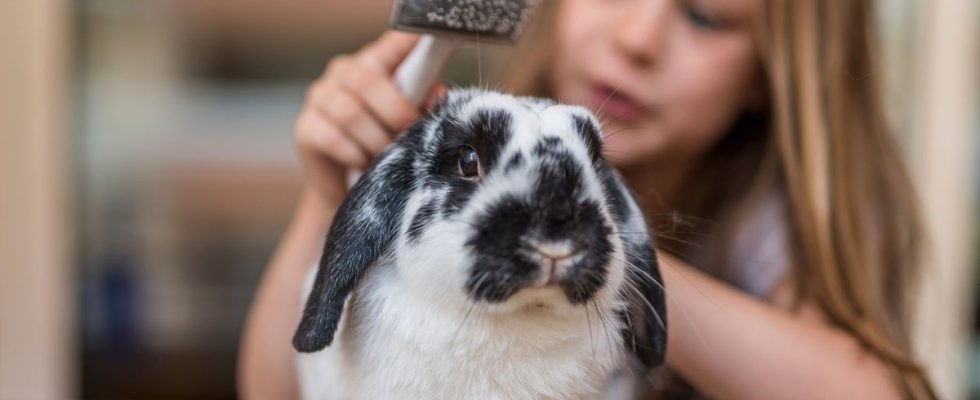Published on
Updated
Reading 3 min.
More and more people are choosing a more original pet than a dog or a cat. Turtles, rabbits or rodents are found in the household, which sometimes also includes children. Be careful, this cohabitation is not without risk, warns the Academy of Medicine.
Rabbits, turtles, rodents… The list of new pets (NAC), new pets is long. More and more people have this type of animal at home, but they are not without risks for human health, as the Academy of Medicine rightly points out.
Pay attention to regulations regarding these animals
In their press release, the Sages first recall that these “non-traditional pets (ACNT), domestic such as rabbit, goat or pig, for example or non-domestic, such as rats, hedgehogs, birds, etc. are governed by specific regulations.
“The detention of some of them is subject to declaration or possession of a certificate of capacity, or even prohibited, due to the risks incurred by the most vulnerable people, including children under 5 years old, an age poorly suited to the recommendation of hand washing” note the Academicians.
Beware of scratches and bites, which can transmit viruses
The Academy of Medicine recalls that these animals are likely to transmit certain infectious agents. “The trauma (bite, scratch, constriction, etc.) that may occur is generally sporadic and not declared by the owner. The bite is the most common means of inoculation of a pathogen present naturally in the animal’s saliva and which can cause fatal septicemia.
Additionally, an animal can carry a disease while remaining asymptomatic, but “close contact with the child also presents a risk of transmission of an infectious agent, particularly when sleeping with the child in the room“.
Here is the list of risks, depending on the animal kept
To go further, the Sages have listed the risks incurred depending on the animal kept.
- Salmonellosis with wild rats or mice, birds (notably through consumption of contaminated eggs from pet chickens), lizards, frogs (after a children’s film encouraging them to kiss these animals), small aquatic turtles (hence their ban on sale in the United States in 1975), reptiles (especially among young children);
- Salmonellosis resistant to fluoroquinolones, linked to the use of these antibiotics in reptiles;
- Lymphocytic choriomeningitis in wild mice and hamsters;
- Psittacosis with birds;
- Enterohemorrhagic colibacillosis in ruminants;
- Poxviruses with Gambian rats having transmitted monkeypox or rats that are reservoirs of the “cow pox” virus;
- Leptospirosis with rats, mice, etc.;
- Hemorrhagic fever with renal syndrome due to Seoul hantavirus (rat).
For Academicians, these risks are underestimated, because there is no alert system and these zoonoses remain unknown for the most part. They therefore put forward several recommendations to try to limit them as much as possible. According to them, it is necessary:
- Inform the public of the risks linked to the presence in the home of certain ACNT whose detention is authorized;
- When children under 5 years of age are present at home, advise against keeping ACNTs which could represent a risk of bite (ferret, rat, iguana), or transmission of infectious agents (rodents, snakes, turtles, amphibians, birds, small ruminants, etc.);
- Remind parents of the importance, in the event of any illness in a child under 5 years old, of notifying the doctor if an ACNT is present at home;
- Strengthen health controls in animal stores housing marketed ACNTs, based on the zoonotic risks specific to each species;
- Create an epidemiological surveillance platform for zoonoses observed in children exposed to the presence of an ACNT, mobilizing all the stakeholders concerned (medical and veterinary laboratories, etc.), and allowing data sharing for detection, early treatment and prevention of these diseases.
